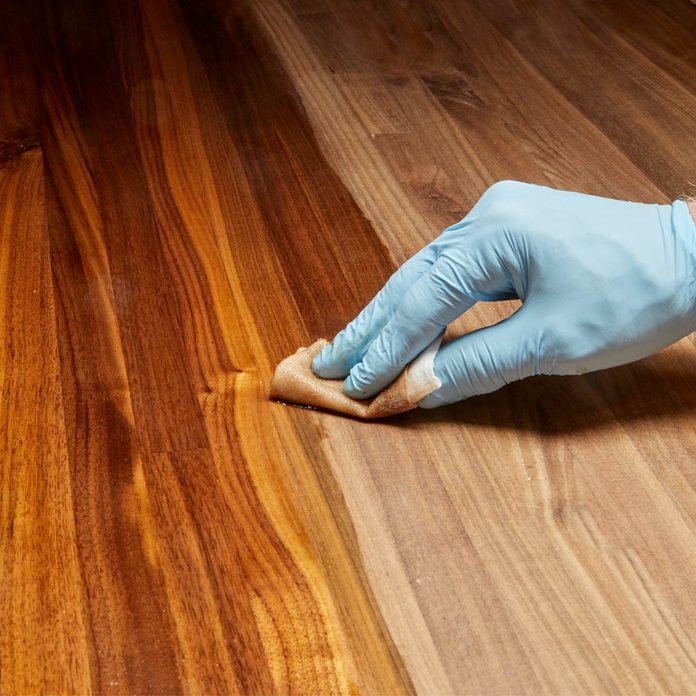
The Pros & Cons of Wipe-On Poly
The best choice for a clear coating is often a specialized finish like pre-catalyzed lacquer—but that assumes you have a spray booth outfitted with high-end equipment. For most of us, polyurethane provides a combination of cost and durability that’s hard to beat. With wipe-on poly, you also get goof-proof simplicity, speed and convenience.
+ FAST. You can coat a project in less than half the time it takes to brush on a finish.
+ EASY. Unlike brushing, wiping on a flawless coat of poly doesn’t require skill or an expensive brush.
+ DUST TOLERANT. Because the coating is thin and dries fast, “nubs” caused by airborne dust are much less likely. That makes it great for on-site finishing.
+ NO CLEANUP. Just dispose of the cloth, container and gloves. No brush to clean!
— EXPENSIVE. On average, wipe-on poly costs twice as much as brush-on poly.
— SLOW BUILD. As a rule, it takes three coats of wipe-on to match the buildup that you get from one coat of brush-on poly. That said, the speed of wipe-on application often makes up for those extra coats.
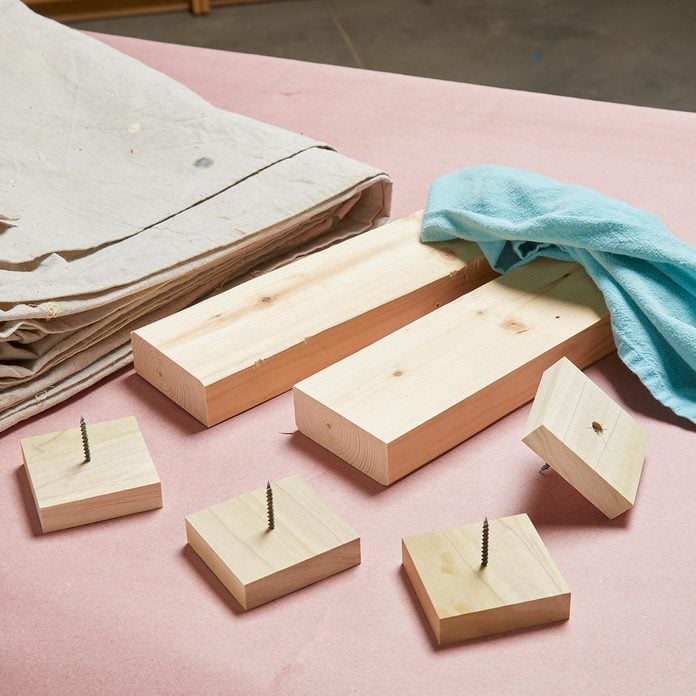
Set the Stage
Drips happen, so use resin paper, a drop cloth or newspaper to protect your worktable. If your project has legs, make standoffs for them to perch on. Standoffs allow you to wipe finish all the way down to the ends of the legs. They poke holes in the wood, so if you have parts that must be finished on both sides, such as a shelf, set them on blocks covered with cloth instead.
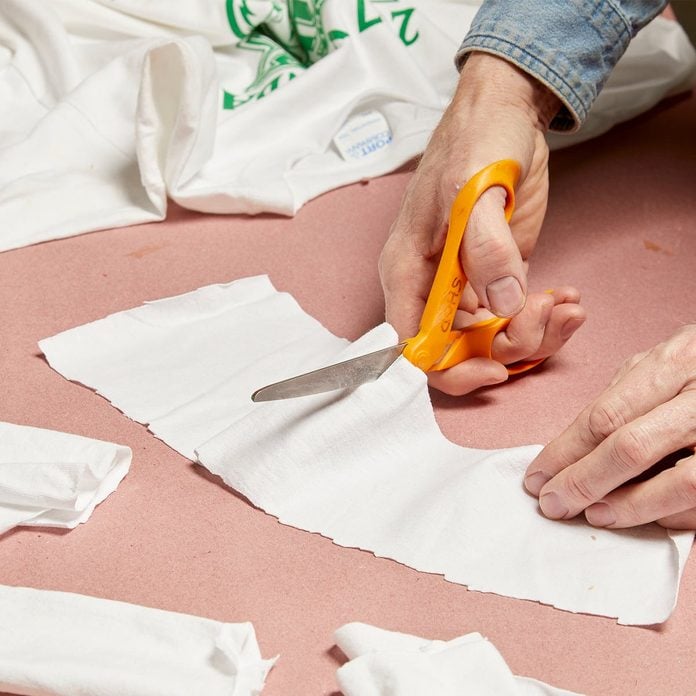
Cut Up an Old T-Shirt
Cut a T-shirt into 6-in. squares. Fold each square in half, twice, to make applicators. White fabric is best because any lint left in the finish is less likely to show.
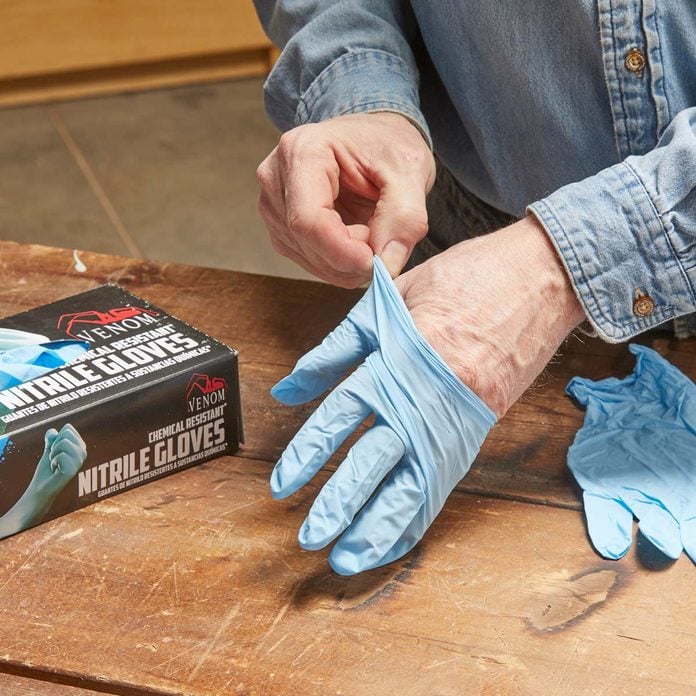
Wear Gloves
Protect your hands with disposable vinyl or nitrile gloves. You can usually reuse them two or three times before they get too gummed up.
See some gloves from Amazon here.
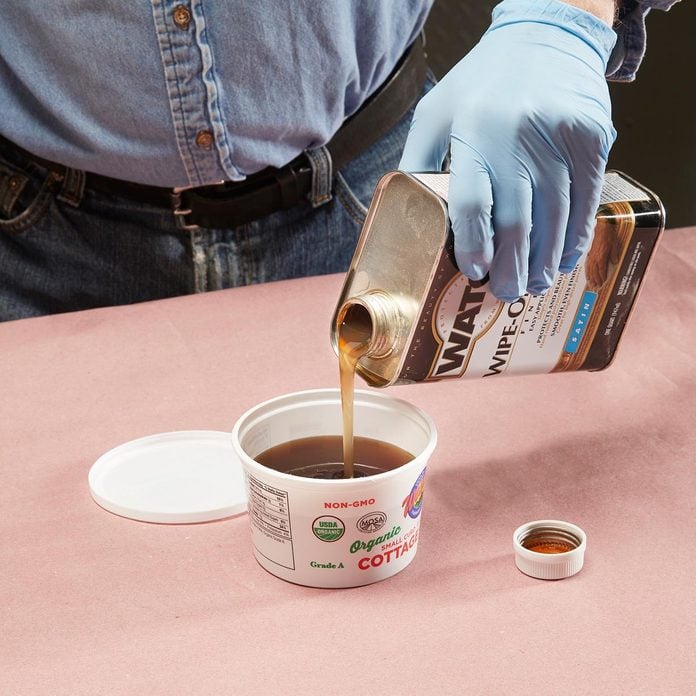
Pour it in a Plastic Tub
A margarine or cottage cheese tub is just right for wipe-on. Dip your rag into the finish, squeeze out the excess and wipe on. With the lid in place, the poly will remain fresh for a couple days. After a few days, the solvent will begin to degrade the plastic, so don’t use plastic for long-term storage.
Look more into our favorite wipe-on polyurethane here.
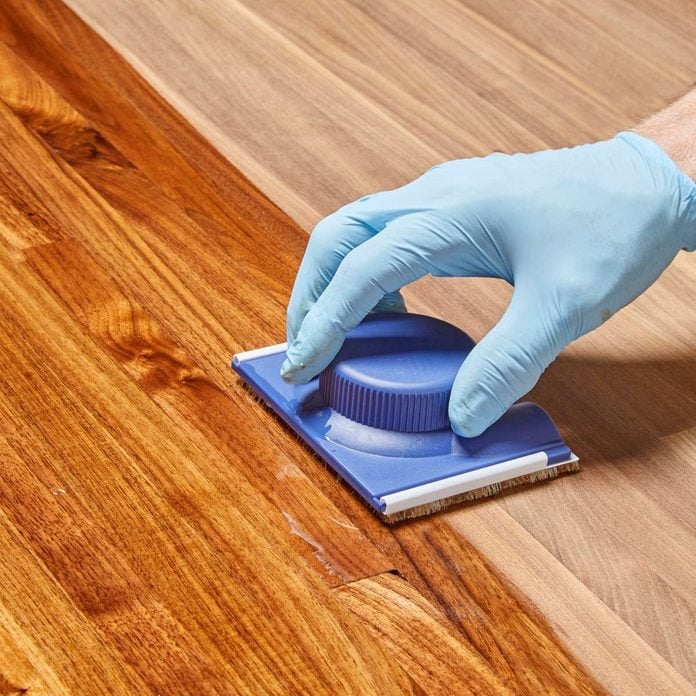
Cover Large Areas Fast
A paint pad holds more finish than a rag and wipes it on faster. You can reuse a paint pad, too. After each coat, just store it in a sealed plastic tub or plastic bag. Get a paint pad at any home center for about $5.
You can also see them on Amazon here.
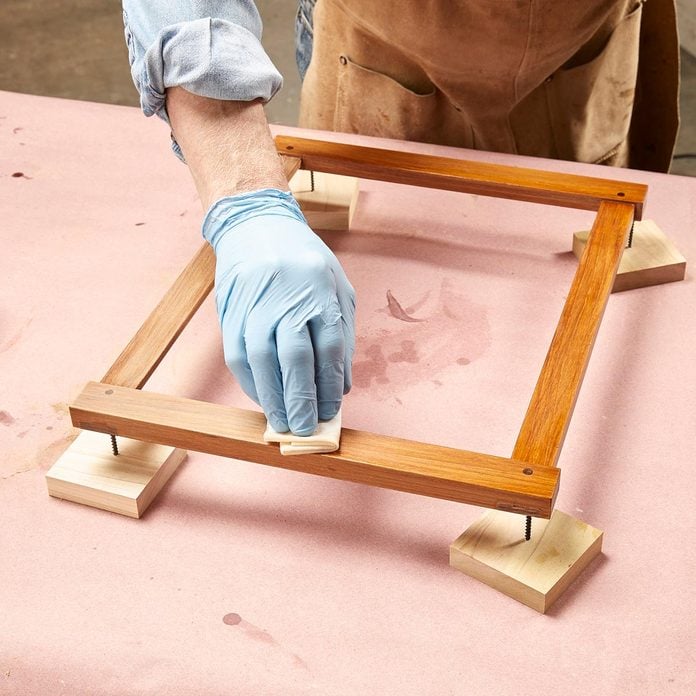
Keep the Coats Light
Three thin coats of wipe-on finish will look smoother than one or two thicker coats. For the best results, don’t sand after the first coat. (You might sand through it!) Apply a second thin coat, then lightly sand with 220-grit sandpaper. Then apply a final thin coat.
Check out this simple sanding trick for touch to reach places.
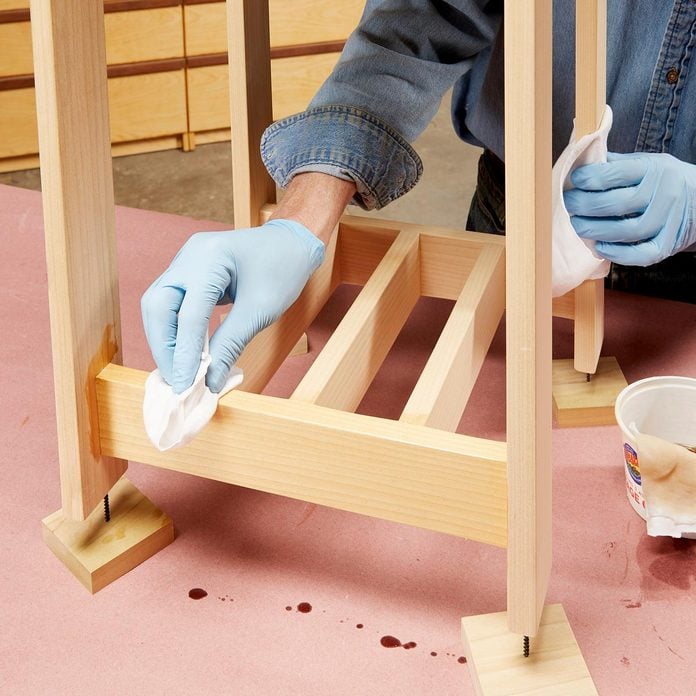
Wipe Off Intricate Projects
On most surfaces you wipe on the finish and just let it dry. If your project has lots of hard-to-access surfaces, try a different approach. Apply the finish to a limited area, then wipe it off after a few minutes using dry rags. This way, you don’t have to worry about accidentally smearing finish on an area you’ve already covered. Just wipe it off.
Need an intricate project? Try these folding Adirondack chairs.
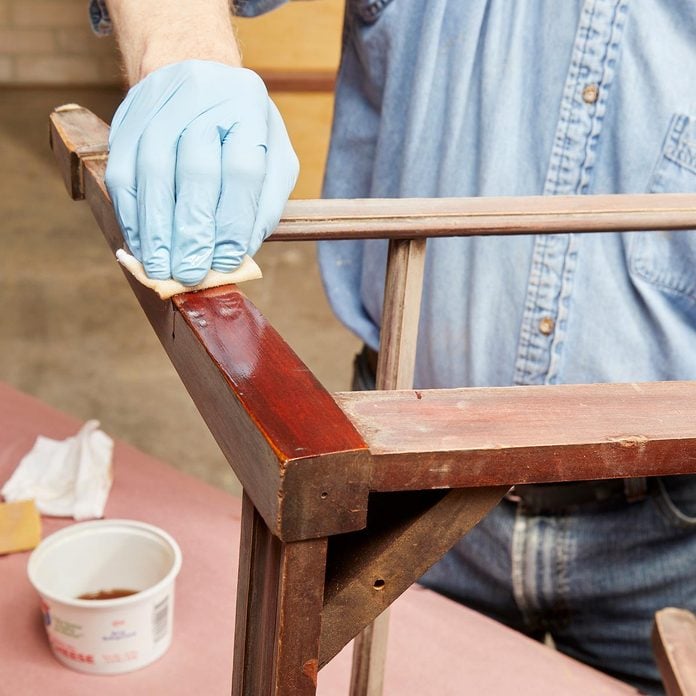
Freshen Up an Old Finish
If your old furniture or woodwork looks dull and lifeless, try renewing it with a few coats of wipe-on finish. Wash it first with dish soap and water, then lightly sand the old finish with 220-grit sandpaper. Vacuum off the dust, then apply the finish as usual. Apply at least two coats to achieve an even sheen.
Learn more about refinishing older furniture here.
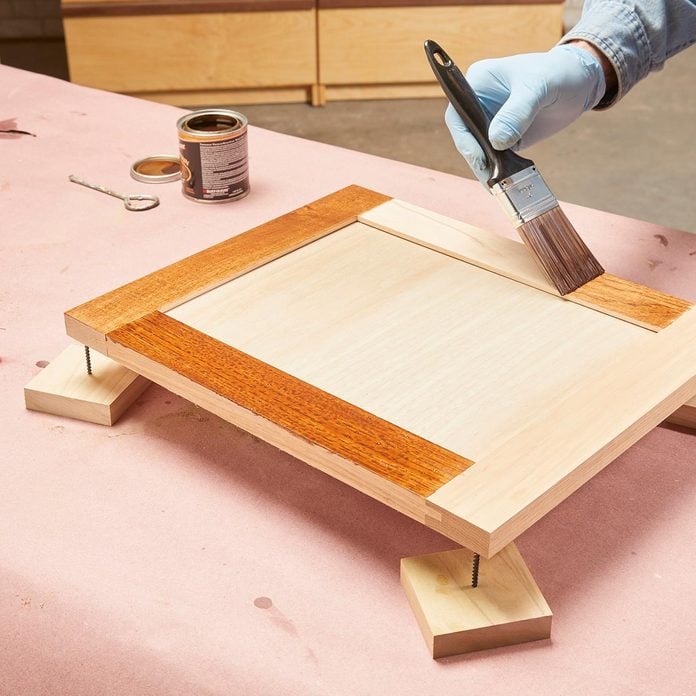
Let Stain Dry Overnight
Applying poly too soon after staining is always risky. And it’s even riskier with wipe-on poly. If the stain isn’t completely dry, wiping it with a rag soaked with finish will cause it to smear. Ugly!
Learn how to stain and varnish wood without getting those annoying blotches by clicking here.
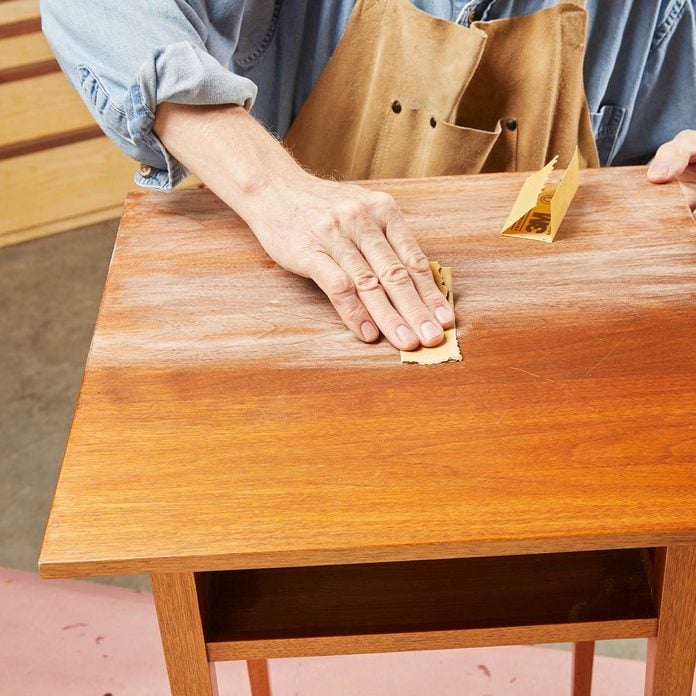
Sand by Hand
Don’t use an electric sander between coats. It will remove too much finish. Sand by hand instead. Fold the paper in thirds so it doesn’t wrinkle, then hold it flat with two or three fingers. Be careful near sharp or slightly rounded edges, though. Sanding too hard might cut through the finish and leave bare wood. It’s best not to sand them at all.
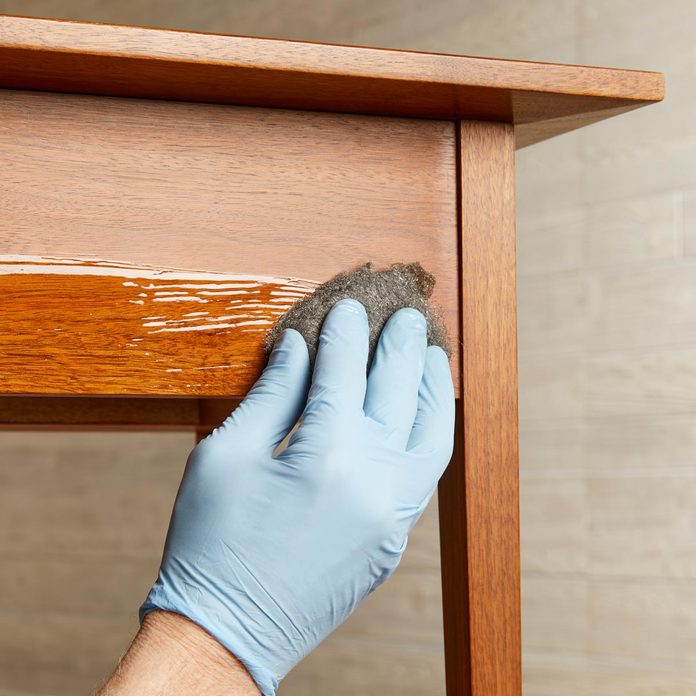
Want Ultra Smooth? Try Steel Wool
If you’re using an oil-based finish and you want to make a surface smooth as glass, apply the last coat with “00” steel wool. Rub hard. The steel wool will cut through any nibs or dust on the surface. To capture the grit and to maintain an even sheen, use a bunch of dry rags to wipe off the finish before it dries. This will leave only an ultra-thin film of finish on the surface.
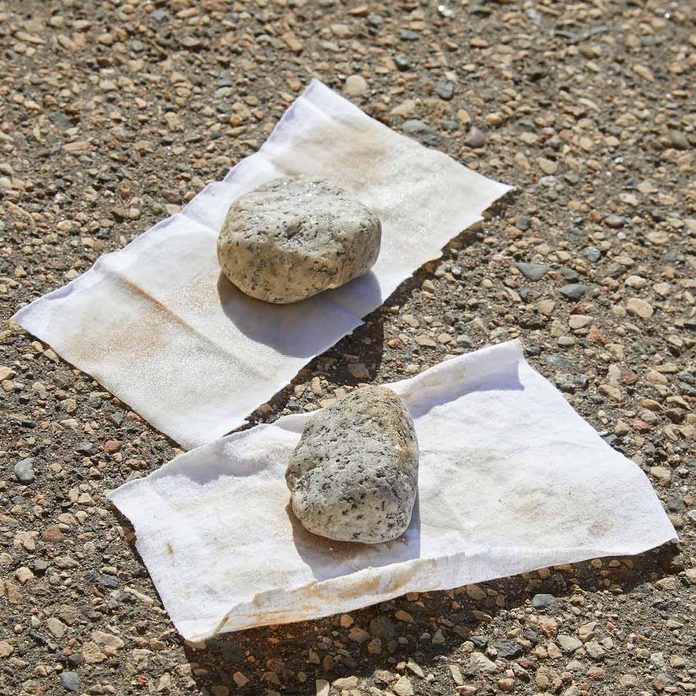
Wet Rags are a Fire Hazard
Take no chances. If rags wet with finish are wadded up, they can heat up, smolder and catch on fire as they dry. However, wet rags are safe if you dispose of them properly. Take them outside and separate them. Place them on concrete or asphalt or hang them with clothespins to dry overnight. Be sure to keep them away from kids and pets. Once the rags are stiff, they’re no longer a fire hazard. You can put them in the trash.
Read this article for some tips on preventing home fires.
Disclosure: This post is brought to you by The Family Handyman editors, who aim to highlight products and services you might find interesting. If you buy them, we get a small share of the revenue from the sale from our commerce partners. We frequently receive products free of charge from manufacturers to test. This does not drive our decision as to whether or not a product is featured or recommended. We welcome your feedback. Have something you think we should know about? Contact us, here.